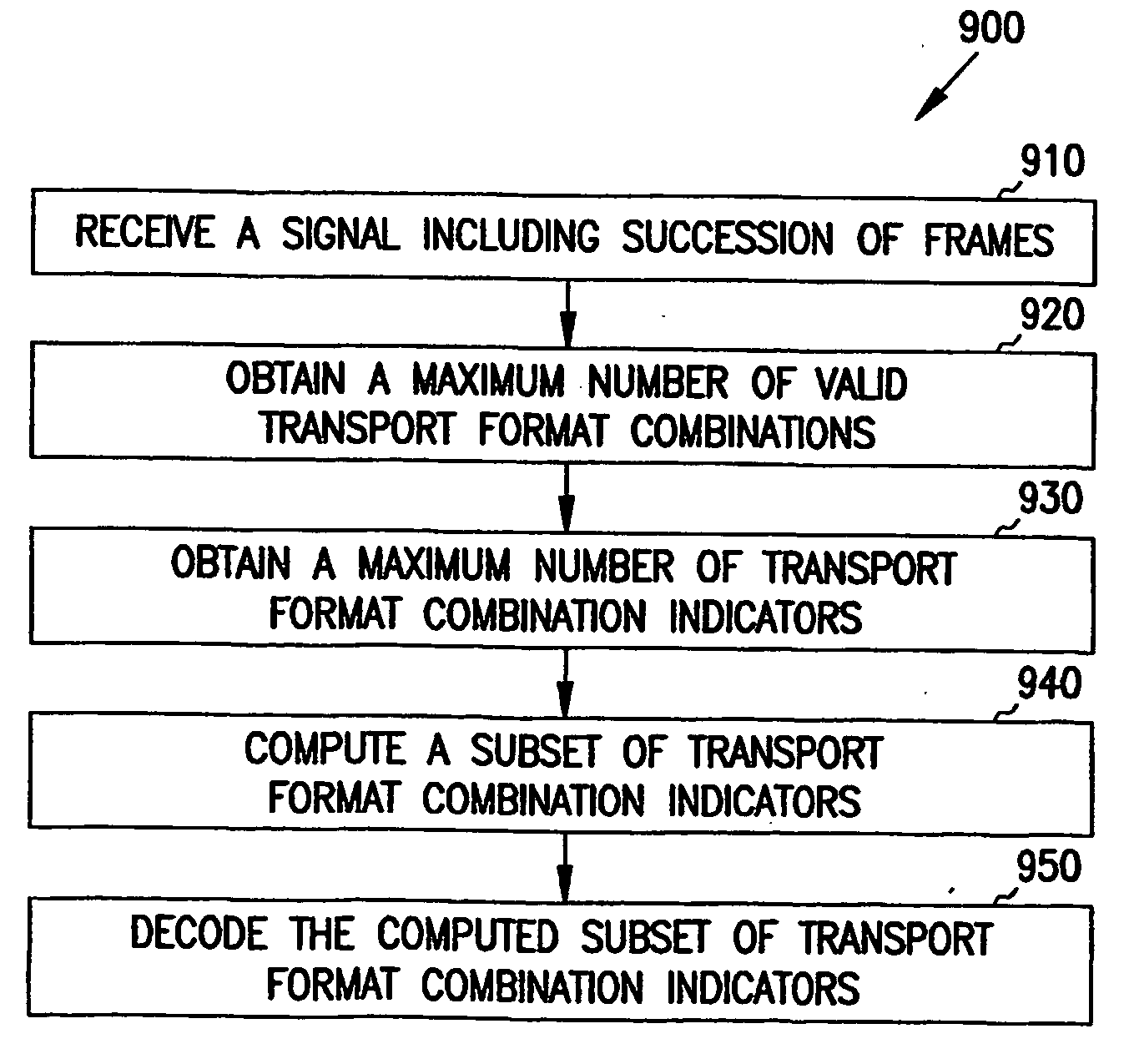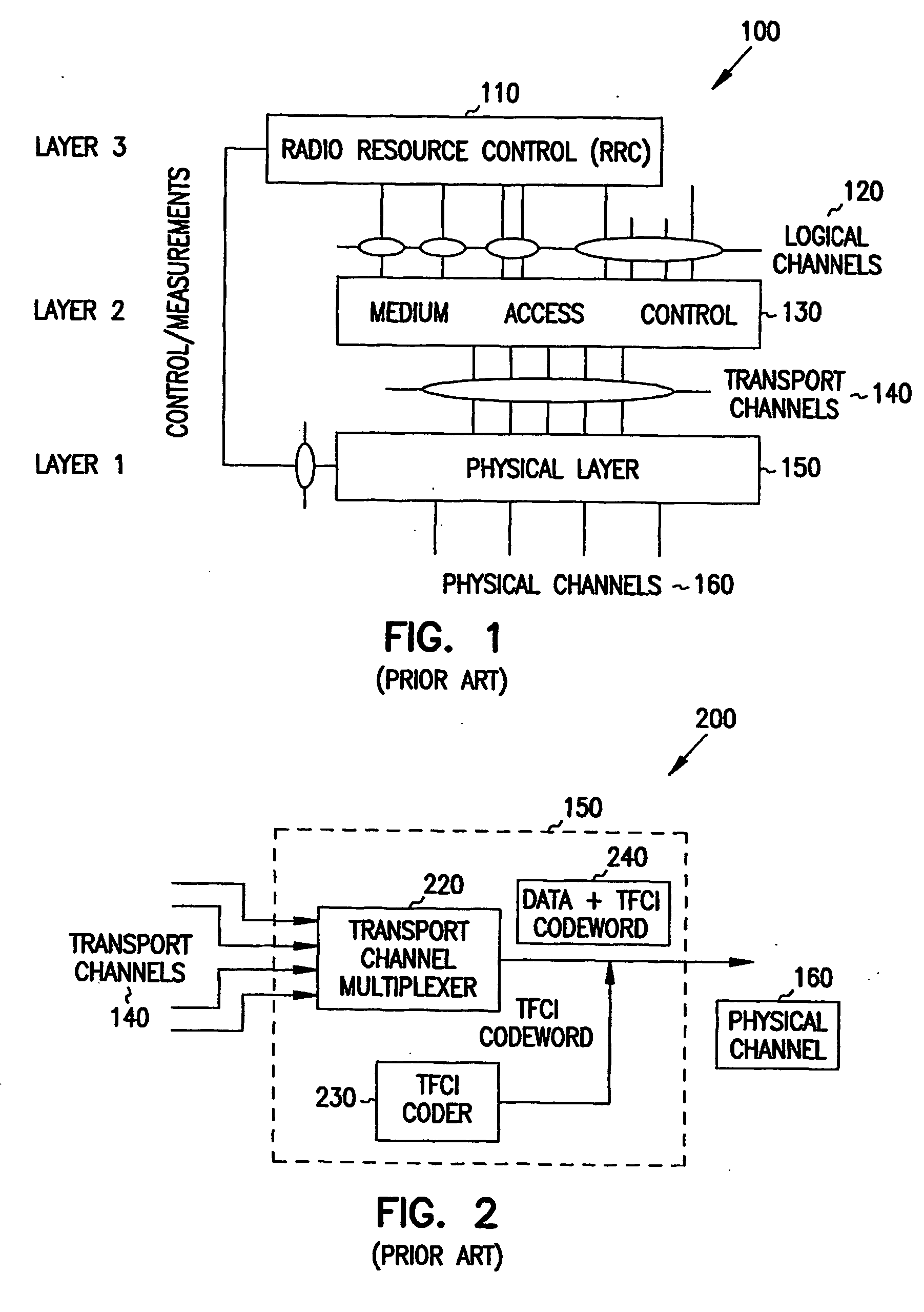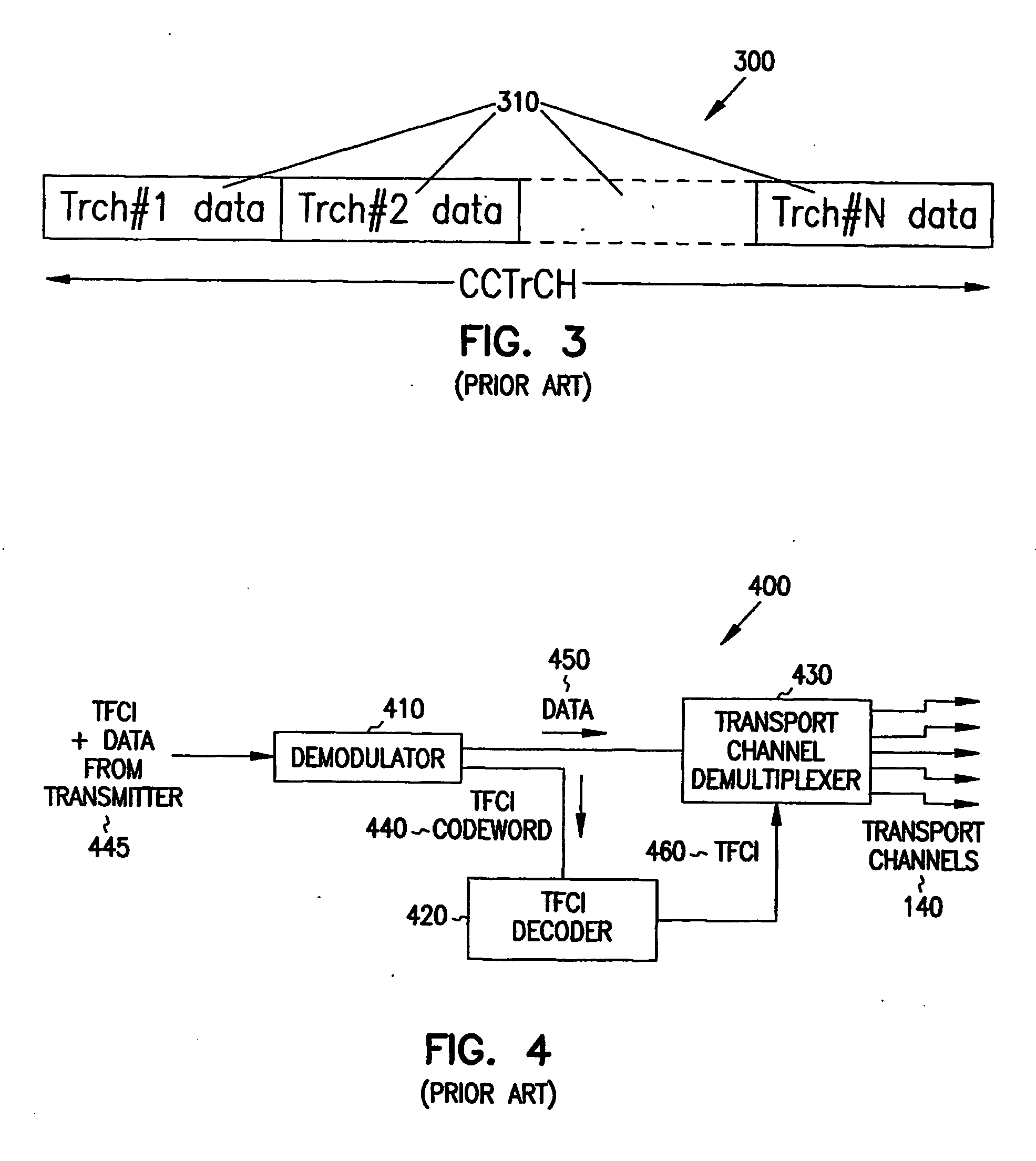Data-rate detection in cdma systems
a data-rate detection and data-rate technology, applied in the field of third generation (3 g) data-rate transmission systems, can solve the problems of relatively complex receivers, drawbacks of both above-current techniques, limited radio link capacity of cellular ds-cdma mobile radios, etc., and achieve the effect of improving data-rate detection reliability and reducing computation
- Summary
- Abstract
- Description
- Claims
- Application Information
AI Technical Summary
Benefits of technology
Problems solved by technology
Method used
Image
Examples
Embodiment Construction
The present invention provides an improved receiver by increasing the efficiency and reliability of data-rate detection in a radio communication system including multiple transport channels supporting variable data-rate transmissions. This is accomplished by providing computationally efficient and more accurate detection techniques.
FIG. 1 shows a prior-art 3GPP radio interface protocol architecture 100 including major components and their interconnections. Generally FIG. 1 shows how physical layer 150 is interconnected to Medium Access Control (MAC) 130 and Radio Resource Control (RRC) 110. Also shown in FIG. 1 are logical channels 120, transport channels 140, and physical channels 160 and their interconnections to the physical layer 150, MAC 130, and RRC 110. The basic protocol architecture 100 shown in FIG. 1 is the same for both the mobile side and the network side. The RRC 110, MAC 130, and the Physical layer 150 are also referred to as Layer 1 (L1), Layer (L2), and Layer 3 (L...
PUM
 Login to View More
Login to View More Abstract
Description
Claims
Application Information
 Login to View More
Login to View More - R&D
- Intellectual Property
- Life Sciences
- Materials
- Tech Scout
- Unparalleled Data Quality
- Higher Quality Content
- 60% Fewer Hallucinations
Browse by: Latest US Patents, China's latest patents, Technical Efficacy Thesaurus, Application Domain, Technology Topic, Popular Technical Reports.
© 2025 PatSnap. All rights reserved.Legal|Privacy policy|Modern Slavery Act Transparency Statement|Sitemap|About US| Contact US: help@patsnap.com



